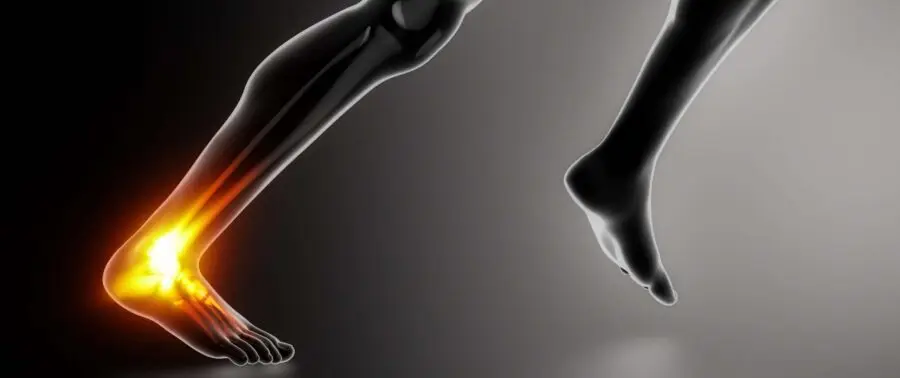
Overuse of the tendon that links the calf muscle to the heel can lead to Achilles tendinitis. As a result, Achilles tendinopathy is a frequent issue among runners. This disease causes discomfort that rises at the start of activity and diminishes afterwards.
Are you an athlete who regularly gets discomfort in the rear of the ankle when training? Do you have muscular stiffness that lasts throughout the day when you get up? Have you seen a suspicious lump on the rear of your Achilles tendon recently?
You almost certainly have Achilles tendinitis if you experience the aforementioned.
Achilles tendinitis symptoms
The Achilles tendon, also known as the calcaneal tendon, is one of the largest and most active tendons in the human body. When it gets inflamed, it affects the entire body. Achilles tendinitis can take two forms: the acute form and the chronic form.
The following are the most common symptoms seen in people with acute Achilles tendinitis:
- A pain that intensifies at the beginning of activity and decreases during the session
- A pain that calms down after resting, but that worsens when waking up
- A tendon that is sensitive to pressure and touch
- Pain behind the ankle that can persist for several days
On the other hand, the following symptoms may indicate chronic Achilles tendinitis:
- Swelling of the tendon
- Pain that persists during training
- Pain that persists during training
- Localized stiffness in the tendon after a period of rest
- Localized stiffness in the tendon after a period of rest
- Difficulty moving without pain in the tendon
- The appearance of a protrusion in the tendon, near the ankle
The intensity and duration are the primary distinctions between these two types of tendinitis.
Acute tendinitis is more severe and painful than chronic tendinitis. It may make it impossible for the runner to complete their routine. The chronic form of Achilles heel tendinitis, on the other hand, does not prevent people from participating in sports. It does, however, make itself felt for a longer period of time.
Causes and exacerbating factors
Achilles tendinitis, which is commonly present in runners, is the result of a mechanical and repeated strain placed on the tendons during activity. When you combine this with a lack of rest, everything is in place for an inflammation or injury to emerge.
Other causes, other than overuse, can also contribute to the development of Achilles tendinitis:
- Inadequate alignment of the foot
- Inadequate running technique
- Sudden change in running shoes
- Pronation
- Not stretching or warming up before a run
Preventative measures and homemade remedies
Achilles tendinitis causes discomfort that isn’t always terrible. It can, however, create pain, making it difficult to run on a daily basis. To avoid problems, this form of inflammation should be treated by a podiatrist.
In the meantime, there are several things that may be done to ease the pain or prevent the damage altogether:
- Perform strengthening exercises that focus on the thigh muscles
- Warm up properly before exercise
- Stretch properly after physical activity
- Allow yourself adequate rest time between exercise sessions
- Stay well hydrated in all circumstances
- Use firm orthopedic heels in shoes
- After the sport session, apply ice to the tendon to reduce inflammation or pain
- Consider a gradual return to running or cycling in response to an injury
- Avoid training when localized pain persists and intensifies
The treatments
Propulsion and vigorous bodily motions are impossible without the Achilles tendon. As a result, any injury to this part of the body should be handled carefully.
To know the origin of the injury and the most appropriate treatments, a consultation in a podiatric clinic is a viable solution.
The podiatrist provides an accurate diagnosis using sophisticated procedures such as foot ultrasound or biomechanical assessment. He or she will then be able to provide the most effective treatment for Achilles tendinitis.
The podiatrist will usually recommend therapies like these to treat Achilles tendinitis:
- Prescription non-steroidal anti-inflammatory drugs
- Adapted foot orthotics based on the patient’s anatomical characteristics
- Changes to training procedures to reduce the likelihood of recurrence
- Laser therapy or electrotherapy to promote healing and stimulate blood flow
- A boot with an extension strap that relaxes the calf and promotes correct tendon fiber alignment.
Of course, the podiatrist will attempt to avoid invasive procedures. However, if the tendinitis is causing severe discomfort that is affecting the patient’s quality of life, a small surgical treatment may be considered.
PiedRéseau – Learn more
Do you want to learn more about Achilles tendinitis? We frequently publish content on such topics!
Even while the PiedRéseau site contains useful information, nothing matches a face-to-face visit with a podiatrist.
Take care of your feet, they’re precious!